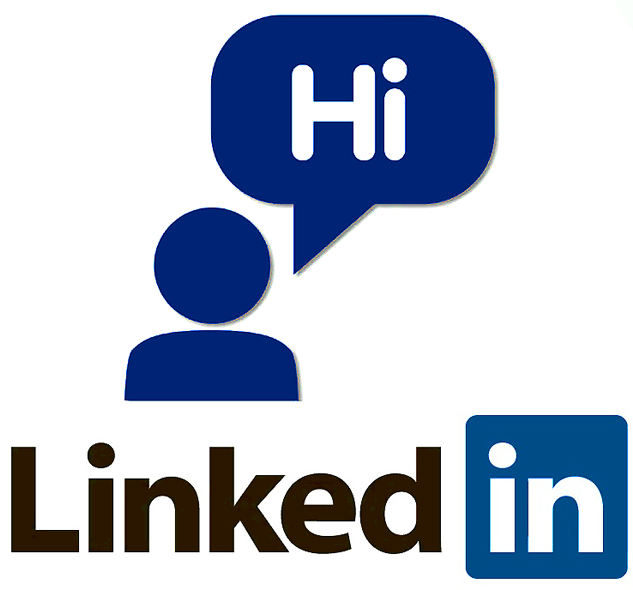Whatever business you’re in, LinkedIn can help you to build a network of useful contacts. With 250 million members in over 200 countries and territories, it’s the world’s largest professional network. Whether you’re looking for a new job, clients, or employees – or simply want to exchange ideas and advice – LinkedIn can be invaluable in providing the right connections.
Here are five tips to help you get the most out of the site:
Complete your profile
Most of the people you connect with through LinkedIn will be people you haven’t yet met in the flesh. Your LinkedIn profile provides a vital first impression, but it also serves as a sort of extended business card. If your contacts are considering hiring or working with you, they are going to refer back to your profile. There’s scope for including all sorts of different information so make the most of it and complete your profile. LinkedIn claims that users with complete profiles are 40 times more likely to receive opportunities through the site and, as there is a built-in ‘completeness’ guide, there’s really no excuse for leaving your profile half-finished.
A professional looking photo is a must. This isn’t Facebook, and no one wants to see you dressed as Batman or rendered as an anime-styled avatar. Use keywords relevant to your job or sector in your professional headline and summary. This will help them register in relevant searches but don’t overdo it; you need to appeal to the human eye as well as ‘bots. Detail your skills and experience and try to acquire recommendations. These are different to endorsements, which help people search for individuals with specific skills. Recommendations are more like personal references and can often be obtained from current or former employers and even former teachers.
Expand your contacts
Building contacts is what LinkedIn is all about. The number of contacts can be important, as this can increase the scope of possible opportunities, but the quality of connections is equally as important. When you start you can easily import pretty much any digital address book or contact list and match that with existing LinkedIn members. That gives you a good base to work from but you should always be looking to expand your contacts. Always personalize your message when sending a connection request and try to give a brief reason or explanation as to why you are sending it.
Research opportunities
LinkedIn provides a range of advanced search options that allow you to focus your efforts and search for specific opportunities. Use advanced search to explore specific industries, companies, and prospects. Join relevant groups in your target market or sector and make your own profile information available for search engines to index.
The opportunities you are looking for are likely to be linked to your professional status. A Lab42 survey found that top executives primarily used the site for industry networking and promoting their businesses. 24% of entry-level employees, meanwhile, said they used LinkedIn for job searches and 23% used it for co-worker networking. If you’re in the market for a new job it appears that LinkedIn is the place to be, with 77 percent of US openings posted on the site. This compares to 54% being advertised on Twitter and just 25% on Facebook.
Stay active
Think of LinkedIn as an ongoing party or networking event. Don’t be the wallflower hiding in the corner. Join in the conversation, but make sure you add value and not just idle chit-chat. It’s the ideal place to share news on events you are holding or developments within your business, but don’t make it just about yourself. Accompany your updates with industry-relevant news and links your contacts might find useful. Visit targeted profiles with your privacy settings off and you will leave a footprint. Most LinkedIn users are interested to see who has been viewing their profile and might respond in kind, potentially leading to a new connection.
LinkedIn Answers, a feature that allowed users to ask questions for the community to answer, has been discontinued but relevant LinkedIn groups can be a great place to connect with other professionals within your sector or area of interest. Ask and answer questions there to share your knowledge and benefit from the expertise of others. The majority of LinkedIn users are members in 10 or more groups but only 10.4% of users join the maximum permitted 50 groups. You can also start your own group. It can be difficult in some industries to make a new group stand out, so try to identify a niche or business area that is under-represented and aim to be the authority on that subject. In order to do so effectively you will, of course, have to provide quality content and take a lead in group discussions.
Nurture relationships
Making sure you accompany each connection request or acceptance with a personalised message is a good way to make sure you start on the right foot. But maintaining relationships can be more challenging, especially if your connections run into the hundreds or even thousands. Luckily, LinkedIn can automatically make you aware of certain changes in your connections and alert you to new links being made. If one of your contacts lands a new job, send them your congratulations. If they are looking for help or advice that you are able to provide, offer it freely.
LinkedIn can be a great tool for marketing your brand and building useful contacts. It does require you to be both proactive and responsive, but the benefits can be worth every bit of effort you put in.
Image created by author





![AI Overviews: We Reverse-Engineered Them So You Don't Have To [+ What You Need To Do Next]](https://www.searchenginejournal.com/wp-content/uploads/2025/04/sidebar1x-455.png)